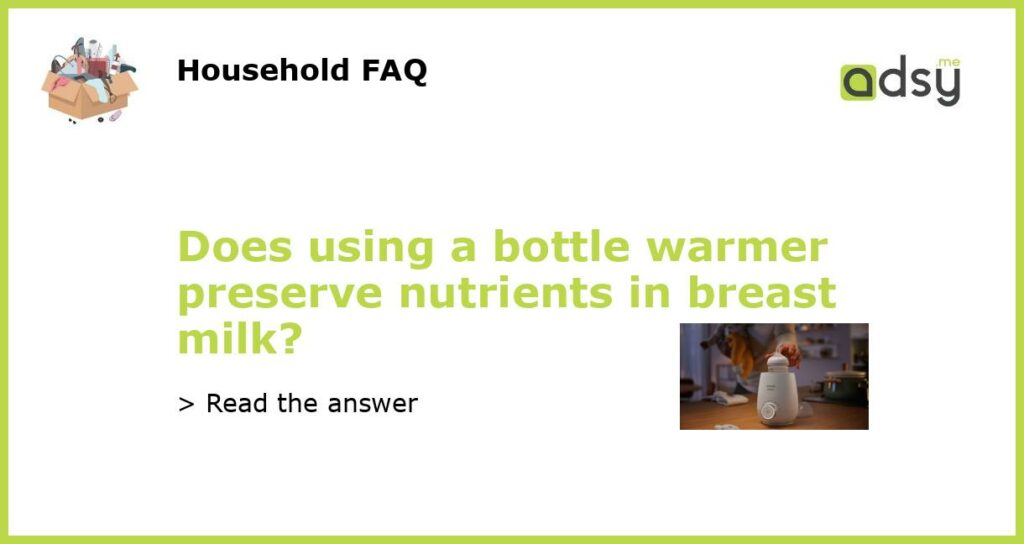Understanding Bottle Warmers and Breast Milk Nutrients
Bottle warmers are appliances that are designed to warm or heat up milk and other liquid foods, especially for infants who prefer warm milk. However, the question arises as to whether or not using a bottle warmer preserves nutrients in breast milk. Breast milk is an essential source of nutrients for newborns, and any loss of nutrients during warming can be detrimental to their health. In this article, we will explore the relationship between bottle warmers and breast milk nutrients to understand whether or not bottle warmers have a significant impact on the quality and nutrient content of breast milk.
How Bottle Warmers Work
Bottle warmers work by gradually heating the milk to the desired temperature. Most bottle warmers use steam to heat the milk, although some models also use warm water. The milk is usually placed in a bottle, which is then placed in the bottle warmer. The warmer uses one of the heating mechanisms to heat the milk gradually. Once the milk reaches the desired temperature, the bottle warmer will turn off automatically, or an alarm will sound to indicate that it is ready for use.
How Breast Milk Nutrients are Affected
Breast milk is the most complete form of nutrition for infants, as it contains vital nutrients such as fat, protein, vitamins, and minerals. Studies have shown that breast milk’s nutrient content can be affected by factors such as the mother’s diet, storage conditions, and warming methods. While bottle warmers are convenient and easy to use, they can also cause a loss of nutrients in breast milk due to the high temperatures they generate.
Preserving Nutrients in Breast Milk
To preserve the nutrients in breast milk, it is essential to warm the milk slowly and evenly to avoid denaturing its proteins and destroying its beneficial enzymes. If using a bottle warmer, it is recommended to use the lowest heat setting possible and to avoid overheating the milk. Another option is to use a warm water bath, which can warm the milk evenly without exposing it to high temperatures. Breast milk can also be warmed by placing it in a sealed container submerged in warm (not hot) water, such as a bowl or pan.
Final Thoughts on Bottle Warmers and Breast Milk Nutrients
In conclusion, while bottle warmers are convenient and can be time-saving for busy mothers, they can cause a loss of nutrients in breast milk. To preserve the nutrients in breast milk, it is recommended to use low heat settings and warm the milk slowly and evenly. Alternatively, using a warm water bath or a sealed container submerged in warm water can also heat breast milk without destroying its vital nutrients. Ultimately, ensuring that breast milk is stored and warmed correctly is essential to providing newborns with the nutrition they need during their critical developmental stages.






